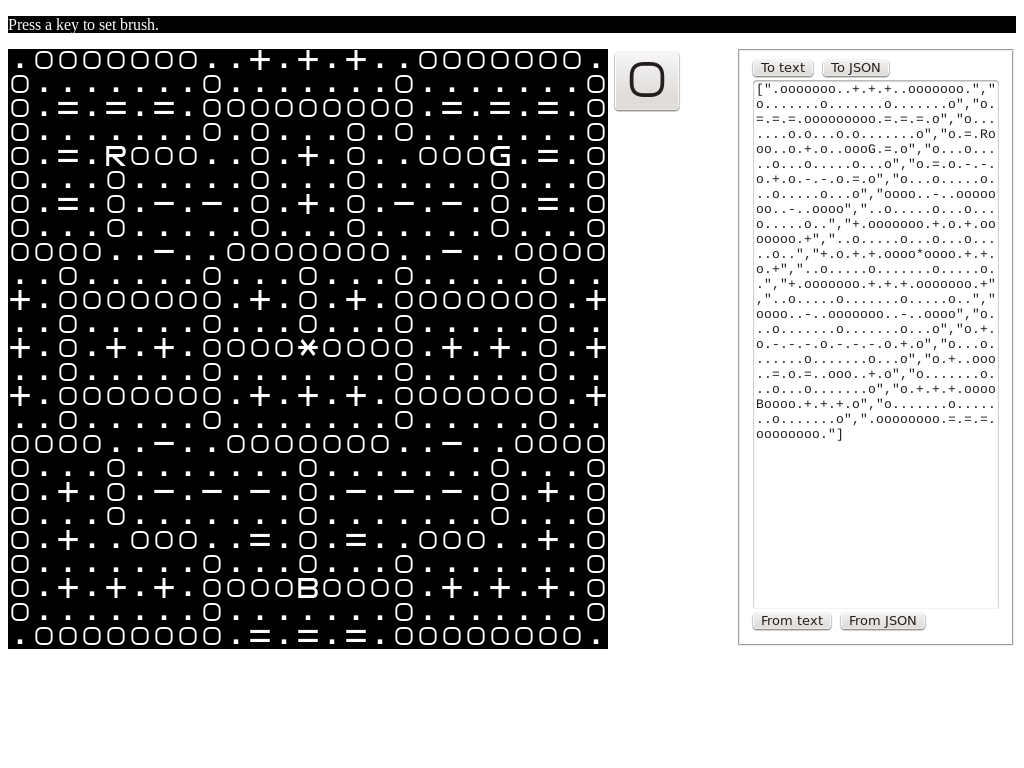Weekly Links #197: roguelike edition
Can’t believe it’s already usable after less than two days of work! What you see here is a tile map editor with a twist: instead of graphical tiles, it relies on plain old ASCII art. The key is an open source font called Square, by Wouter van Oortmerssen, in which — as the name suggests — all characters do their level best to fill a square shape. And unlike a bitmap font, a TTF can be used in any size without changes, which will be very useful down the road.

(I also wrote 400 words about the game this is for.)
In other news: to mark the end of this year's Procedural Generation Jam, issue #2 of their zine Seeds just came out, this time put together by the one and only Jupiter Hadley (via Mike Cook). Highlights include a serious use of procedural content generation, and another on thinking about games and art a lot more broadly than we do now. Accessibility — in all senses of the word — is a leitmotif throughout. A couple articles on worldbuilding and one on randomization in shoot'em ups (like my own Laser Sky) also stood out. And that's just in the first quarter of the zine! Definitely a keeper.
Also in the way of events: occasioned by the recent Roguelike Celebration in San Francisco, Santiago "Slashie" Zapata, of Temple of the Roguelike fame, researched the moment when roguelikes were first recognized as a distinct genre. Ironic how the term, which is now so common people are talking of roguelike-likes (even as they acknowledge the problems with that), was so controversial at first. And it's fascinating to see what the original definition did and didn't include compared to the Berlin Interpretation, never mind the modern, vastly expanded conception of the genre.
Last but not least, and also in the way of roguelikes, a slightly older article that's just too good to pass up (via K.D.): not only it's one of the best introductions to the genre I've seen — including a very personal account — it also explains their enduring appeal in a way that will sound very familiar to our readers:
[...] the closer to life computer graphics become, the more our brains find their realism wanting. It’s easier to suspend disbelief for the symbolic (Pac-Man, Mario) [...]
Add the wealth of links and citations, and it's a must-read. Enjoy.